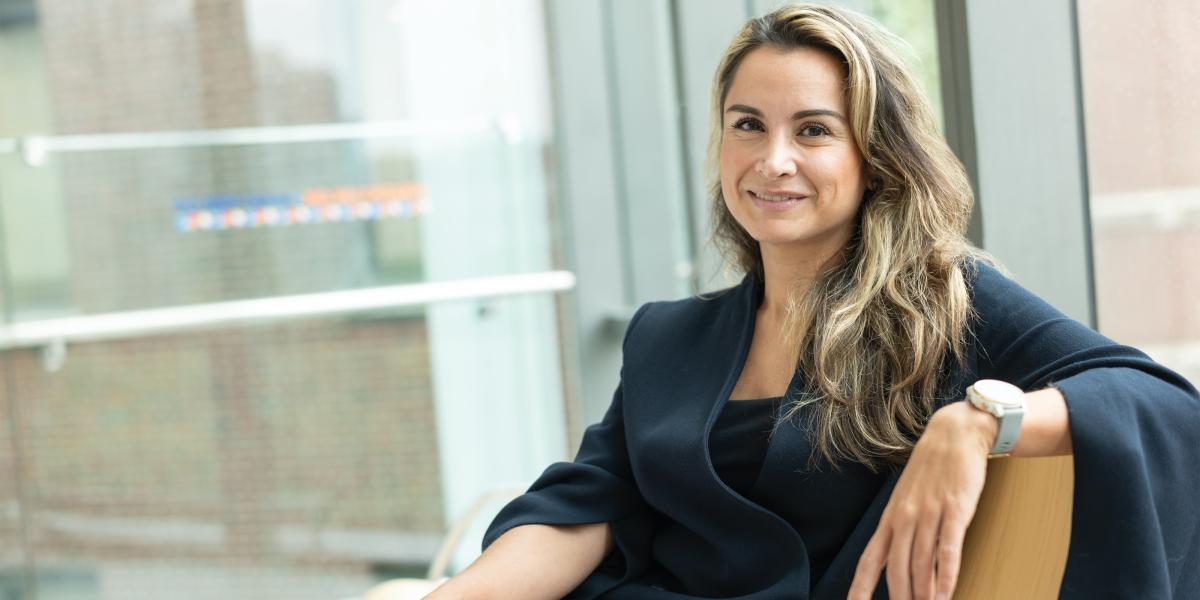Safety for All—Inpatients, Prisoners, and Staff
Jails and psychiatric inpatient units don’t have to be settings for violence.
Certain settings seem to have conditions for violence built in. Take any institution where people are held against their will, their actions are strictly controlled by others, they experience monotony, and they may share space with people who have mental health problems. Jails and psychiatric inpatient units check all those boxes. And that’s exactly why Nargus Harounzadeh chose to work there: With the right tools, she believes, violence can be prevented.
A Bloomberg Fellow, Harounzadeh, DNP, MPH, provided behavioral health care to people on the Clinical Alternative to Punitive Segregation units at Rikers Island for just a few years when she realized that these tools could be enhanced and replicated at a large scale. Now, as Director of Violence Prevention for Behavioral Health at New York City Health + Hospitals, she combines her clinical experiences and academic training to reduce violence in facilities across the city. In an interview, she shared how she came to this work, one of the most effective approaches NYC Health + Hospitals is using, and how her Bloomberg fellowship led her to take violence prevention systemwide.
To anchor this discussion, it’s helpful to know that New York City Health + Hospitals is the largest provider of behavioral health services in New York City and includes 11 hospital facilities across the five boroughs. Correctional Health Services is a division of NYC Health + Hospitals that offers both medical and mental health care to patients who are in the NYC jail system.
I took a class in a maximum-security jail in Philadelphia during college. It was a yearlong course on the politics of crime and punishment, and we met to discuss policies around retribution and rehabilitation with men in custody on a weekly basis. This was a transformative experience for me.
I joined Correctional Health Services in 2016, providing direct clinical care to patients at Rikers Island on the Clinical Alternative to Punitive Segregation units, which were dedicated to treating individuals with serious mental illness and a history of significant violence. In 2019, I became the clinical supervisor and worked on developing interventions to reduce the risk of violence on the CAPS units. For example, I introduced a group focused on managing confinement-related stressors using breath, movement, and visualization techniques. Participation was open to both CAPS patients and CAPS officers to promote therapeutic relationships between the patients, clinical staff, and the uniformed officers.
The role I have now—NYC Health + Hospitals’ director of Violence Prevention in Behavioral Health—is largely a result of my experiences as a Bloomberg Fellow. When I was working at Rikers, I was doing some programming as well as a lot of direct patient care. Once I started the Bloomberg fellowship, I started thinking about violence from a systems perspective and how we could craft a standardized prevention program across our 11 facilities. Without the Bloomberg Fellowship, I might not have dreamed up this role and pitched it. I think it's a really huge win for us as a system to have a director of violence prevention for the Office of Behavioral Health. It’s the first time we’re taking a systematic approach to prevent violence.
The Behavioral Health Associate Academy is one of our most innovative approaches to violence prevention. We’ve had BHAs in the system for quite some time; they serve as the patient advocate and provide ongoing and consistent patient engagement. They’re there from day one, employing trauma-informed care to support the patient and understand their lived experiences and triggers. This helps BHAs recognize escalation patterns so they can intervene before a situation becomes violent. The Academy standardizes this role by providing 150 hours of training, spanning about a month, including both clinical and classroom hours. It’s rooted in PMCS—Preventing and Managing Crisis Situations—a New York State OMH [Office of Mental Health] program widely recognized as effective in preventing crises. It also teaches what it looks like to be a BHA—what does it mean to show up on a consistent basis? What does it mean to provide compassionate care?
When people are acting out certain behaviors, sometimes they’re acting out their trauma. They may not have the skills to be able to communicate the way you or I do. We treat these patients in the same way we treat all of our patients—through a framework of trauma-informed care. This means taking the time to understand the patient’s lived experiences in order to deliver the most effective care.
Prevention is our main intervention, and that’s where the BHA is the front line. They might see a patient getting agitated, and this is where assessment is key. First and foremost, are the patient’s basic needs met? Is the patient hungry? Are they thirsty? Do they have a blanket?
We also look for opportunities to practice coping strategies with the patients and offer support. Maybe a patient is angry because they had a bad conversation with a family member. We tune into what is driving their discomfort and help them through it. As you can imagine, being able to identify the root of a patient’s agitation takes skill, especially in an environment that can be difficult to work in to begin with.
The science of violence prevention is in its nascency. As we move through the next several years, there is going to be a lot more evidence to leverage and inform our practices. I'm really excited to see where it goes. I think it is a great time to be working in violence prevention. Awareness around it is growing. The science is growing. And addressing it from a public health approach is gaining traction.
